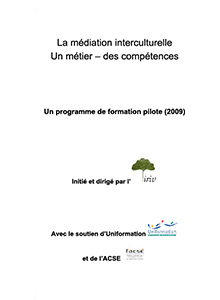Cutural mediation in Europe
- Publication : 2009
- iriv
- 96 pages
- ISBN : 2-9513188-4-7
Since the Amsterdam treaty in 1997, immigration has become a European competence. This European policy aims at mastering migratory flows, at struggling against illegal immigration and the human traffics it generates. The European Union has published several texts focused on the security approach, giving the defensive image of the “besieged fortress”. A necessary dimension of immigration policies is the integration of migrant populations who live and work on our territories. Integration concerns many aspects: welcoming of foreigners as soon as they arrive, offering decent housing, being able to work in normal conditions, education for the children, training for adults, and health for all. Cultural mediators give a human figure to Europe which may appear as « unfamiliar» to many migrants. Being a foreigner is not only a status, with its administrative implications, this is also a state of mind. Being welcome, understood, supported helps to escape from the far away feeling which occurs with misunderstanding and sometimes hostility people may feel when they live abroad. The main goal of cultural mediation is to enhance this goal. The profession of cultural mediators has been developing in several European countries first on a voluntary basis then in a more professional way. The ambition of this publication is to recognize and value this brand new profession in Europe.






























































